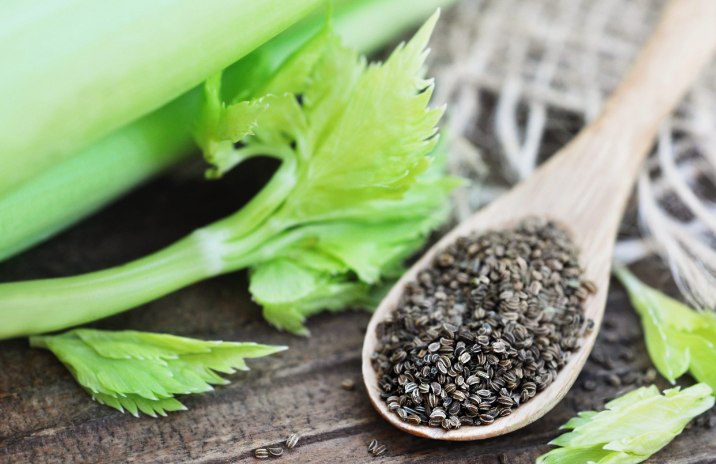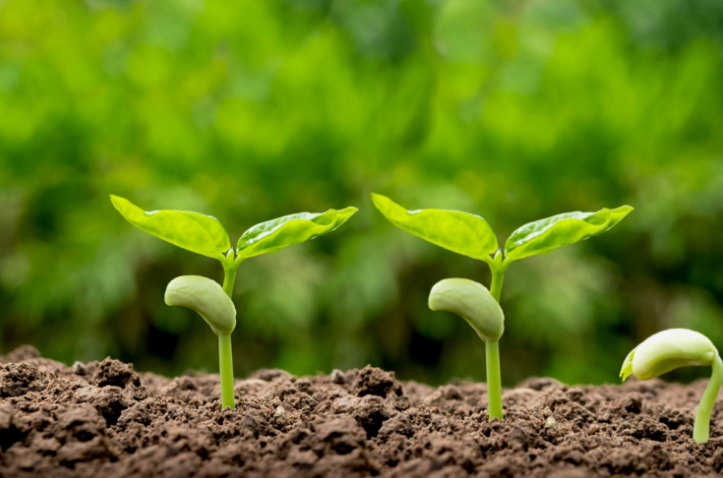Celery Seeds: The Trick That Gets Them to Germinate
Celery Seeds: The Trick That Gets Them to Germinate
Celery seeds are notoriously difficult to germinate, and on my first attempt they failed miserably; not one sprouted celery seed could be seen. After tweaking my method for the following year’s attempt at germinating celery seeds I achieved an excellent germination rate and finally succeeded!
But the work doesn’t stop there; celery seedlings take time and care to become edible, delicious stalks that we all appreciate. In this article, I’ll show you how you can give your celery crop an early headstart.
Celery seeds require three things in order to germinate: temperature of 70degF, constant moisture and direct light.
To ensure constant humidity use plastic wrap or a dome. Sprinkle the seeds on top of a soil mix like coco coir and leave them exposed or cover with perlite. Place under lights or a windowsill.

That’s all there is to sprouting celery seeds in a nutshell and it works just as well for celeriac. Now let’s take a closer look to make sure you get all the steps right:
Celery Seed Germination Conditions
Following are the celery seed germination conditions:
Celery Germination Temperature
As I mentioned, celery seeds, like most vegetable seeds, love a good mellow room temperature of about 70°F (21°C) to germinate.
Celery can be grown both as a spring crop and a fall crop. It needs about 3 to 4 months to reach maturity and plenty of cool weather. For this reason, the only way to grow celery as an early crop is to start the seeds well before the last frost: 10 to 12 weeks before, to be exact.
That’s right, you should start your celery seeds at around the same time as your peppers and eggplants if you want an early crop because celery grows VERY slowly. It’s a 4-month project from germination to harvest. And the only way to do that is to start them indoors, in a controlled environment.
Constant Moisture
I don’t know about you, but I find that *constant* moisture is the hardest thing to achieve in gardening indoors, as opposed to raised beds. My containers and module trays either dry out or I overwater – it’s a neverending cycle.
The trick with ensuring constant humidity is to pre-moisten the soil mix, sow your seeds, spray with water and then cover the container with either plastic wrap, a transparent plastic lid or a humidity dome. Anything that traps the moisture in and is see-through does the job.
And then LEAVE IT ALONE. Check the seeds daily for signs of germination, but don’t water too often, unless the surface looks dry. Overwatering is just as bad for tiny seeds like celery.
Grow Lights vs. Windowsill
Does Celery Need Light To Germinate?Celery seeds need light to germinate. That’s the most important fact that new gardeners are often unaware of. Here’s what this means for your method of sowing. You could:
- Cover the seeds with a very thin layer of seed starting mix;
- Not cover the seeds at all (but you risk drying them out if you’re not careful);
- Cover with a layer of perlite or vermiculite that leaves the light through (this trick works well for germinating herbs like rosemary, basil, thyme, etc).
Now that you have your seeds semi-exposed, it’s time to place them under grow lights. Since I use my grow lights for other seedlings as well, I keep them on a 16hrs ON 8hrs OFF schedule. These are strong lights and help me get sturdy celery seedlings.
Alternatively, you can place your containers on a windowsill, especially if it’s sunny all day long, but you risk getting leggier seedlings. Don’t worry, you can fix this at a later stage.
Find out: Why Is Lettuce Growing Tall? Bolting Explained
How long do celery seeds take to germinate?
Celery seeds take anywhere from 2 to 3 weeks to germinate, so BE PATIENT! You’ll see a few sprouts push up from underneath the plastic wrap because not all of them will germinate at the same time. Once half of them have sprouted, remove the wrap, lid or dome and keep misting the soil mix from above until all seeds have germinated.
Once you have tiny seedlings, start watering them from below – but be careful not to overwater. Here’s a useful resource on how to properly water young seedlings.
If your celery seeds take longer than 3 weeks to germinate, it’s either too cold, you’ve allowed the soil surface to dry out, they don’t have access to light, or you have old seeds. As for seed age, celery seedlings can last for up to 5 years, so check your seed pack for the expiration date.

Starting celery seeds step by step
- Start celery seeds in a smaller container and sprinkle them all over the soil. Don’t worry about future thinning at this point.
I used to start celery seeds in module trays and handle 3-4 microscopic seeds per cell. Not only is this tedious and time consuming, but celery seedlings often need pricking anyway, so it’s best to save yourself the trouble and start them in a separate container, like you would with lettuce. - Pre-hydrate the soilless mix and select one containing peat moss or coco coir to retain moisture for best results. Your seedling mix should act like a sponge so you can water as little as possible while still giving seeds room to germinate freely.
- Sprinkle the seeds on the surface and cover with perlite or vermiculite.
This does two things: it traps some moisture in and stops the seeds from sticking to the plastic wrap (if that’s what you’re using). Don’t worry if the perlite turns yellow, it’s because of the regular misting from the top. Spray the perlite thoroughly with water. - Place the container under grow lights.
Avoid lowering the lights all the way – this could cause the surface to heat up and exceed 70°F I suggest you invest in quality grow lights – these are the ones I personally use and I love how strong and effective they are. - Check for germination regulary. Mist and water from below when necessary.
Keep in mind that not all seedlings will germinate at the same time, and it’s okay for some of them to push against the plastic wrap – they’ll recover. - Once the seeds have germinated, allow the seedlings to grow to 1 inch before pricking.
Celery seedlings grow SLOWLY so don’t worry if this takes more than a week or two. At this point, depending on your sowing density, you should have a lot of seedlings growing close together, and they may even get a little leggy. - Prick the celery seedlings and place them one by one inside spacious module trays.
At this stage, the young seedlings will need plenty of compost in the potting mix to feed them for the time they’ll be spending indoors.
It’s okay to bury the pricked seedlings deep when transplanting, especially if you’re dealing with leggy celery. The same goes for when you’ll be transplanting them a second time, in the garden.
Once celery seedlings have been transplanted into larger pots, you should keep them indoors for six weeks or more before weather conditions allow you to plant them outside. While this may seem like a long period, celery grows slowly enough that you won’t feel overwhelmed.
Make sure that your seedlings are appropriately hardened off to prevent transplant shock, and be mindful if growing both celery and celeriac, since their appearance can be similar.
Now you have it: an exhaustive and step-by-step guide for germinating celery seeds and correcting leggy seedlings. I hope that you give celery a try this year; its fresh flavors surpass store-bought offerings any day! Until next time, happy gardening!
How Do You Trick Seeds To Germinate?
How to germinate celery seeds quickly?
1. Soak Seeds-Soak the seeds for 12-24 hours to soften their seed coat.
2. Employ Bottom- Heat thermique mat, and maintain a temperature between 70-75degF (21-24degC).
3. Light Exposure- Celery seeds require sunlight, so press them lightly into the soil without completely covering them up.
4. Moisture & Humidity – To maintain proper conditions, keep soil at an even moisture level while covering with plastic wrap to maintain humidity levels.
5. Pre-Chilling (Optional) – To improve germination rates, store seeds in the refrigerator for at least one week prior to planting them.
Celery Germination Time
Germination typically takes between 7-14 days in ideal conditions.
How do you encourage seeds to germinate?
What makes seeds germinate faster?
FAQ’S
Does celery need cold stratification?
Do Celery Seeds Need Light To Germinate?
Yes, celery seeds need light in order to germinate successfully, so they should be sown on the surface of the soil without covering them up too heavily.
Where Does Celery Seed Come From?
Celery seeds are harvested after the mature flowers of Apium graveolens have bolted, leaving behind small seeds which are collected, dried, and used either seasoning food or planting new celery plants.
